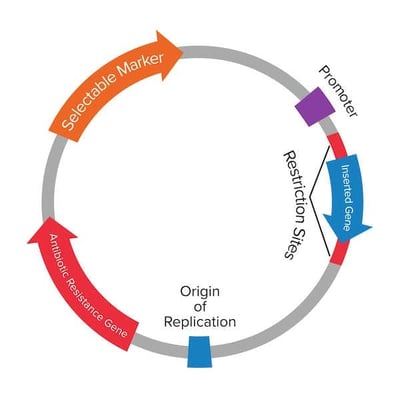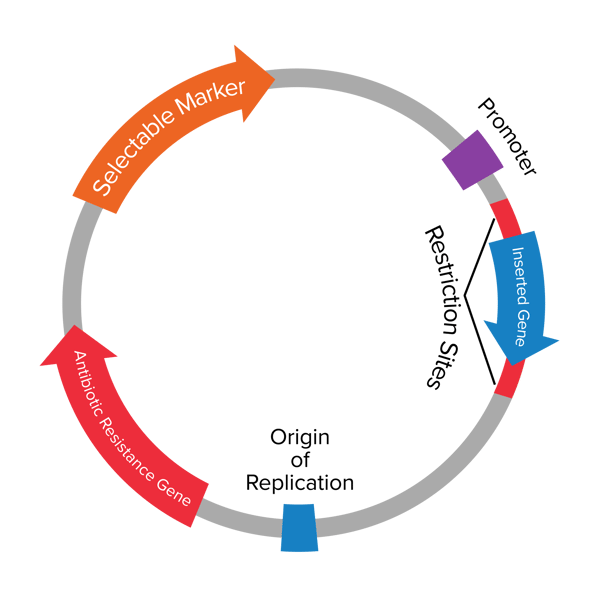Plasmids that govern their own transfer are known as A conjugative. 3- Plasmids that govern their own transfer are known as.

Why Do Plasmids Manipulate The Expression Of Bacterial Phenotypes Philosophical Transactions Of The Royal Society B Biological Sciences
They contains genes coding for proteins involved in both DNA transfer and forming of mating pairs.

. Plasmid is a double-stranded circular and supercoiled DNA. Many other unrelated resistance plasmids are also known to have broad host ranges Thomas. They are most commonly found as small circular double-stranded DNA molecules in bacteria.
One broad host range plasmid is the resistance plasmid RP1 also known as RP4 and RK4 first identified in a clinical strain of Pseudomonas aeruginosa. Plasmids that govern their own transfer by cel to cell contact. Plasmids are today known for their ability to transfer from one species of bacteria to another through a process known as conjugation contact between cells that is followed by transfer of DNA content.
In the process they are capable of conferring antibiotic resistance properties to other species of bacteria. Plasmids that govern their own transfer by conjugation are called conjugative plasmids but not all plasmids are conjugative. A substitution deletion or addition of one base-pair.
TOL pWWO plasmid of Pseudomonas putida is an example. Known as R plasmids among the most widespread and well-studied groups of plasmids confer risistance to antibiotics and other growth inhibitors resistance is spread between bacteria through conjugation. PropertiesCharacteristics of bacterial plasmids.
4- A point mutation refers to mutations involving. The dele6on of a base pair microdeletion. Plasmids that govern their own transfer are known as A transformable.
Conjugative plasmids are self-replicating molecules that encode their own transfer to recipient strains usually by a type IV secretion apparatus. This plasmid appears to be able to transfer productively to most if not all Gram-negative bacteria. Within a cell it can exist autonomously.
Plasmids that govern their own transfer are known as. B have the F factor as a plasmid. It can replicate independently of the bacterial chromosome.
D transfer the complete F factor to recipient cells at high frequency. A substitution deletion or addition of one base-pair. 4- A point mutation refers to mutations involving a.
A plasmid is a small extrachromosomal DNA molecule within a cell that is physically separated from chromosomal DNA and can replicate independently. The gain of a base pair microinsertion. Plasmids that govern their own transfer are known as A transformable.
Hfr strains of Escherichia coli A do not possess an F factor. It has a molecular weight of 10 6 -10 8 which may encode from 40-50 genes. Plasmids that govern their own transfer are known as.
How does the amount of available glucose impact the transcription of the lac operon. F strains of Escherichia coli. Plasmids that govern their own transfer are known as.
Hfr strains of Escherichia coli. High lives of glucose decreases activation of CAP which decreases transcription of the lac operon. Be integrated into the chromosome replicate independently of the chromosome be transferred cell to cell during conjugation ALL ABOVE.
This helps them govern their own transfer. 3- Plasmids that govern their own transfer are known as a. Conjugative plasmids in addition to the ORI and maintenance genes also contain genes coding for specific transfer functions.
Plasmids that govern their own transfer are known as A transfective. Homologous recombination has been observed in. It confers resistance to infection by viruses of the same type.
A DNA sequence that allows bacteria to make more copies of the plasmid as they grow and divide. C have an integrated F factor. The gain of a base pair microinsertion.
Some important components of plasmids are Origin of replication Ori. In nature plasmids often carry genes that. Since plasmid transfer requires over 30 genes only medium or large plasmids possess this ability.
Change in a base-pair sequence. The plasmids which are transferred from cell to cell are known as conjugative plasmids. Viruses are known to infect Bacteria but no virus has yet been found that infects Archaea.
Plasmids can be considered part of the mobilome because they are often associated with conjugation a mechanism of horizontal gene transfer. Many medium-sized plasmids such as the F-type and P-type plasmids can do this and are referred to as Tra transfer-positive. The dele6on of a base pair microdeletion.
To date there is no evidence that RNA viruses infect Archaea. However plasmids are sometimes present in archaea and eukaryotic organisms. Change in a base-pair sequence.
Metabolic plasmids also called degradative plasmids possess genes to code enzymes that degrade unusual substances such as toluene aromatic compounds pesticides 2 4-dichloro- phenoxyacetic acid and sugars lactose.

Plasmids 101 What Is A Plasmid

Plasmids 101 Origin Of Replication

Ecological And Evolutionary Solutions To The Plasmid Paradox Trends In Microbiology
0 Comments